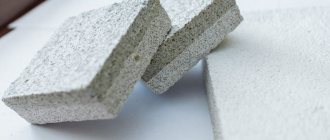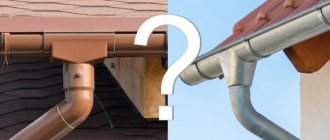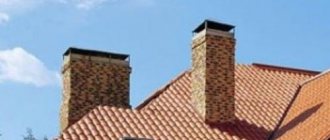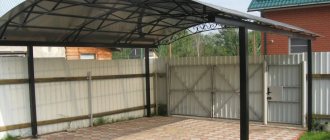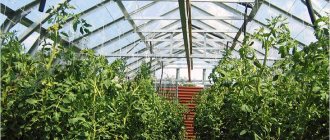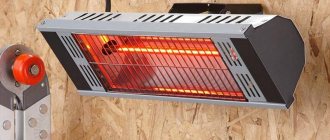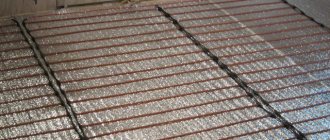Home / Vegetable garden
Back
Published: 06/24/2021
6
Rate this post
Weeds seriously complicate the life of gardeners, forcing them to periodically engage in tedious and time-consuming weeding. You can make your work easier by using a special covering material against weeds on your site, which many summer residents have already appreciated. Let’s figure out what types of such shelters are produced, what to choose for specific crops, and how to avoid mistakes.
- 1 Features of use
- 2 Advantages and disadvantages
- 3 Types 3.1 Agrotextiles
- 3.2 Film
Features of use
For today's “advanced” gardeners and gardeners, synthetic fabrics used to cover plantings on the site are not a novelty. With their help, summer residents from different regions of the country successfully protect plants from cold, scorching heat, precipitation, and pests.
One of the varieties is geotextiles, created specifically to protect cultivated plants from weeds, characterized by high density and laid on the ground.
The black fabric does not allow sunlight to pass through, preventing the growth of weeds. Without light, photosynthesis processes are disrupted, the root system dies, and plants dry out and die.
Meanwhile, in the slits of the fabric, happy tomatoes and strawberries, eggplants and sweet peppers are reaching out to the sun. The light is not blocked from them, and the harmful sow thistle and wheatgrass, quinoa and wormwood do not take away their nutrition. There is no need to weed the plantings or use toxic herbicides; all you need to do is spread the material correctly on the beds.
This coating is ideal for weed control in strawberries. The grass does not grow, the soil retains the moisture necessary for plants, the berries ripening on the bushes do not lie on the ground, but on top of the material, and do not gather dust or get wet. The beds look well-groomed and neat, while caring for crops and harvesting are greatly simplified.
Many summer residents use the material for beds to plant tomatoes, eggplants, peppers, cucumbers, zucchini, and pumpkins. Plants that are heat-loving and capricious in agricultural technology develop better, get sick less, and produce excellent yields.
Reviews from gardeners
Reviews about the use of black weed control material are generally quite positive. Some disappointments are apparently associated with the choice of the wrong brand of material, not intended for use in agriculture.
Anastasia, 32 years old, Tver
For a long time I hesitated to grow strawberries after watching my friends and relatives struggle with them. All spring and summer they disappeared in their beds. And then I heard about a new non-woven material and decided to try planting a few beds. I got it all right the first time, and I'm so glad. The berries ripen cleanly, it is very pleasant to pick them, and almost no weeds grow. I didn’t remove this material for the winter; it overwintered well and, I hope, there will be even more berries this year.
Oksana, 37 years old, Podolsk
Of course, I’ve heard about how some friends mulch the soil in their strawberry beds with straw, but I myself don’t have the opportunity to get that much straw. Therefore, when I found out about a new breathable black material, I decided to definitely try it. I bought spunbond with a density of 60 g/m2. m. and decided to cover a new bed with strawberries with it. I prepared everything as expected, made holes and planted seedlings in them. I once used film to control weeds, but I didn’t really like it because the weeds didn’t grow, but slugs settled under the film and ate most of the crop. I didn't notice anything like that under this material. At first everything was just fine, but after a month the first weeds crawled into the holes, and for some reason the strawberries even grew mustaches right under the spunbond. Then I realized my mistake and covered all the bushes with flat decorative stones and planks, thus pressing the spunbond to the ground. It became much better, and although some weeds still tried to rise under the material, I threw mowed grass on top of everything, and until the fall the weeds were no longer visible.
Mikhail, 49 years old, Saratov
When I first heard about spunbond, I became very interested in it. Is it really possible to grow strawberries without painful weeding and without using chemicals? I haven’t covered my strawberries with anything before, but I spent almost all my time planting. I covered the newly developed plantation for the first time and by the end of summer there was almost nothing left of the material. Weeds have penetrated this fabric in all places, and in addition, it has begun to creep apart on its own. But I didn’t give up and studied all the possible varieties in a little more detail. The next year I decided to try a material with the same name, but with a different texture. It cost more. This time I was lucky; I didn’t even think about weeds all season. When I lifted the edge of the shelter in the fall, it was clear that they were trying to grow, but could not break through this material and they were all lying pale on the ground.
Advantages and disadvantages
Judging by the reviews, covering fabrics for the ground are popular with many summer residents.
Among the advantages of use:
- facilitating and simplifying the care of vegetables, flower beds, berry beds, flower beds;
- protection of beds from overgrowing with weeds;
- creating a barrier that covers the soil from the effects of high or low temperatures and heavy rains;
- possibility of use in open ground, in the garden and garden plot, in greenhouses, hotbeds, tunnels;
- ease of use;
- durability - with proper use, the canvas lasts for several seasons;
- affordable price.
There are not many disadvantages:
- Strong heating of the ground due to the dark color of the fabric. Therefore, in hot southern regions they usually mulch with hay, straw or other materials, and also use a more functional two-color canvas.
- You must carefully study the information about the purchased product and follow the instructions completely.
If the canvas is laid incorrectly, then the desired result will not be obtained.
What to look for when purchasing material
High-quality weed cover fabric is the key to the health and safety of cultivated plants. Experienced farmers do not recommend purchasing agrofibre without branded packaging. Often the user thinks that the film is called spunbond, lutrasil or lumitex. Under the guise of an expensive brand, there is a cheap fake that does not correspond to the declared properties.
The method of using raw materials depends on its characteristics. If the fabric has a density in the range of 17-30 g/m2, then the option is convenient for protection from the cold. Thickness 42 and 60 is suitable for both compact greenhouses and large greenhouses. Products with indicators of 60 and above suppress the development of weeds and protect crops from drought and low temperatures. The mark on the label “UV” indicates the presence of an ultraviolet stabilizer.
Kinds
There are a huge number of brands and types of covering material on the market. Even experienced summer residents get confused in the assortment. To choose the right weed control cloth, you need to be well versed in the types of products.
Agrotextiles
All materials made from synthetic fibers are presented on the market under two names: geo- and agrotextiles. Among them:
- polyethylene;
- polypropylene;
- polyester;
- nylon and others.
Depending on the production technology, the fabrics have different properties and, therefore, differ in areas of application.
There are two main groups:
- Non-woven agrotextiles produced by thermal, mechanical joining and fastening of threads. A frequently used name is agrofibre. Well-known brands are “Spunbond”, “Agrospan”, “Lutrasil”, “Agril”. It allows moisture to pass through well, “breathes”, stretches, and can last up to 3-4 years. They produce non-woven agrotextiles of various densities (17g/m2, 30g/m2, 50-60g/m2). For weeds, the thickest, brown, green or black color is usually used.
- Woven agrotextiles (agrofabric), made by interlacing threads. It is characterized by high strength, water resistance (it is impossible to water through it), and resistance to deformation.
This is interesting! In everyday life, summer residents often call all such fabrics lutrasil or spunbond, although such terminology is only suitable for non-woven materials.
All varieties have special UV protection (stabilizing layer), are resistant to pathogenic microorganisms (mold, various bacteria), and withstand temperature changes without changing their characteristics.
It is impossible to say which is better or worse, since agrofibre and agrofabric have different areas of application.
Instead of mulch, high-density agrofibre (50-60g/m2) of black or brown color is laid on the beds to protect against weeds. Thanks to this fabric, the growth of weeds is inhibited and the evaporation of moisture from the soil is delayed. At the same time, it allows water and air to pass through without creating a greenhouse effect from below.
Among the new products is a modernized colored agrofibre, the upper and lower sides of which differ in color. Yellow- and white-black materials are used to protect against weeds. In terms of functionality, such products are superior to dark canvases, since due to the presence of a light (white or yellow) side, overheating of the root system of plants under cover is eliminated, and due to the reflection of sunlight, fruit ripening is accelerated.
Expensive geofabric, unlike agrofibre, is more durable (service life up to 20-25 years), so it is recommended for use in vineyards, for fruit trees and berry bushes, as well as in landscape design. An excellent option is to lay paths between the beds, and cover the areas with plantings themselves with mulching agrofibre.
Woven material does not allow water to pass through well, so it is advisable to use it where there are drip systems. This solution will eliminate problems with watering, while financial investments in equipment and material will pay off with interest.
Film
For a long time, summer residents used black agrofilm made of polyethylene as protection against unwanted vegetation on the site. But at the same time getting rid of the weeds, but they really did not grow, dying on the vine. We had to solve other problems.
Polyethylene shelters do not allow water to pass through, so the method of irrigation and fertilizing from above is not suitable. Under material impermeable to air and moisture, an unfortunate greenhouse effect is often created, pockets of infections arise, the root system of plants rots, and mold forms.
The black film is quickly damaged. Often you have to buy new material for the next season. Summer residents are increasingly abandoning polyethylene coverings for mulching and choosing affordable non-woven fabric.
Weed control film
Until recently, black weed film was the main material used by gardeners. Since it has excellent darkening properties, weeds actually do not survive under it. The disadvantage of this material is that since it does not allow water to pass through, the condensation that accumulates under it causes the development of fungal diseases. In addition, it is usually enough for one season.
Advice! In order not to change it every year, you can purchase reinforced film - it is stronger and can even be used to cover the passages between the beds.
How to lay it correctly
Before spreading the material, prepare boards or wire staples to secure it to the ground. The following steps (step by step):
- remove existing weeds from the garden bed;
- dig up the soil, apply fertilizer if necessary;
- level the surface with a rake;
- measure the width and length of the ridge;
- cut off the required amount of textile from the roll, taking into account that the allowance for fastening will require at least 15 cm;
- carefully spread the material over the surface of the soil, smooth side down, rough side up;
- level over the entire ridge;
- make cross-shaped cuts or cut out circles according to the planting scheme (seedlings are planted in these places or seeds are sown);
- The canvas is secured around the perimeter with boards, wire pins (staples) or sprinkled with earth.
After this, they begin planting crops. It is better to work in calm weather, following the instructions. Further care - watering, fertilizing, tying up plants - is carried out without removing the material.
Geotextiles in garden paths
There is no such local area that its owners do not equip with paths. As a rule, tiles of various configurations are used for this. There is no greater enemy to these engineering structures than weeds. Their roots lift the flooring and their stems penetrate the seams, causing the tiles to crack and break. In addition, there is a constant washout of soil and underlying cushion.
These factors lead to the fact that after a few years the paths fall into disrepair. The use of geotextile fabric will help to avoid costly and lengthy repairs.
A strip of material is laid at the bottom of the pit under the path. Gravel and sand are poured on top of it. The fabric ensures uniform pressure of the covering cushion on the ground and prevents it from being washed away by melt and rain water. The geotextile will be pressed so tightly to the ground that weed sprouts will have no chance to lift or cut through the fabric .
With small additional costs, the savings are obvious - there is no need to carry out repair work and fight weeds. The paths will always be dry, as the woven material allows water to pass through well.
Material for crushed stone against grass growth
A garden path made of crushed stone and gravel may well become a unique element of garden decor. By following the installation technology, you can reduce the germination of weeds and grass on them to a minimum.
Film
Conventional types of vinyl films that are used in everyday life are not suitable for laying paths due to their thinness. For grass to grow, it needs light. Therefore, it is better to lay a black permeable film under the crushed stone:
- agril is a polypropylene non-woven fiber characterized by high light and water permeability;
- lutrasil is a lightweight, elastic synthetic material made from polypropylene threads connected by needle-punching, chemical reactions and welding, permeable to water and moisture.
Note! These materials are also used as covering materials in agricultural technology. They have different densities.
When using regular thick household film, you need to make holes in it so that moisture goes into the ground.
Geotextiles
Belongs to a class of building materials intended for creating layers for various purposes. Divided into:
- woven fabric (geo-fabric), which is made from glass or polyester fibers;
- non-woven fabric made from polypropylene and polyester threads.
How to cover the soil to stop grass growth
Weeds significantly complicate the cultivation of fruits and vegetables. It is recommended to cover the ground with covering material in order to grow crops.
- Use an opaque material to prevent grass from growing. Cardboard, black film, and roofing felt are suitable for covering. You can also lay boards, cover them with agrofibre or crushed stone.
- Cover with 5-10 cm of organic mulch. Mown green plants, sawdust, nut husks, and tree bark will perfectly cover the soil and prevent the growth of weeds.
Solving the problem of grass growth on crushed stone and gravel paths
In practice, eliminating the growth of weeds in a dacha or garden is an impossible idea. Fallen leaves and soil found on gravel and crushed stone paths, one way or another, become the basis for grass germination. However, proper care will ensure a neat appearance for your garden space. It is enough to remove the foliage in time with a fan rake or a garden vacuum cleaner. And treat germinating grass, for example, with Roundup and Tornado, without waiting for it to gain growth.
Material for crushed stone

